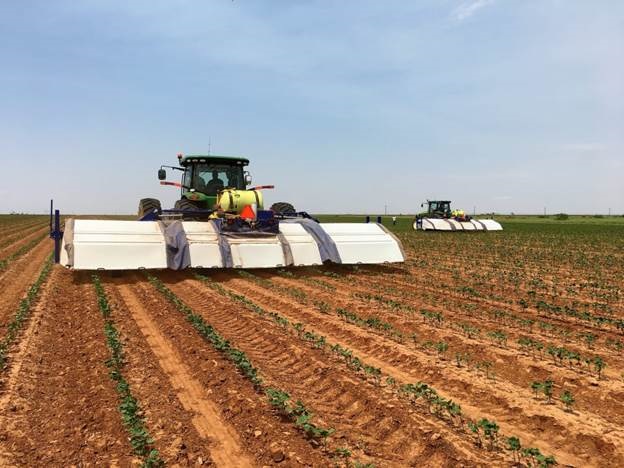Robots, Robots Everywhere
Robots in Food Service
With the Consumer Electronics Show (CES) just past, it might be a good time to mention two developments in robotics that we’ve recently noted. Sage analyst Larry Jeddeloh at The Institutional Strategist noted that this year’s CES was the occasion for Pizza Hut [NYSE: YUM] to unveil a driverless delivery service, partnering with Toyota [NYSE: TM] in the development of autonomous electric vehicles.
Autonomous food delivery systems will represent a major savings in labor and insurance costs for the companies that adopt them. Automation in fast food businesses will not be restricted to delivery services, however. Fast food, of course, represents a major portion of low-skill employment in the United States — a portion of the workforce that is the focus of the recent push for greater minimum wage requirements in many states. In 2018, 18 states are pushing to raise their minimum wage, with California leading the charge — aiming at $15 before the end of the first quarter.
The impulse behind minimum-wage hikes is often noble — the socioeconomic betterment of the lowest-income strata of the working class. Unfortunately, the law of unintended consequences is very pertinent here. Faced with a sudden hike in labor costs, companies with the ability to do so — including fast-food stalwarts McDonald’s [NYSE: MCD] and Wendy’s [NASDAQ: WEN] — will ramp up automation. Both of the companies mentioned are planning to replace significant numbers of cashiers in 2018.
As we have noted frequently, we do not hold with the doomsayers who believe that automation will render large swathes of the population permanently unemployed. In every historical epoch of accelerating automation, the economy has adjusted and created new demand to absorb the labor of displaced workers. This time will not be fundamentally different. Therefore, we cannot regard companies using automation to boost their financial performance as evil or underhanded. In fact, the rollout of such technology always ultimately serves to push an economy towards the creation of more fulfilling and rewarding employment, and less menial labor — the whole economic history of the developed world since 1800 serving to illustrate this truth.
With that said, we would not shy away from investment in companies whose bottom lines stand to benefit from the increased automation of menial and routine tasks — and it looks like fast food and all types of delivery businesses are likely to be strong beneficiaries of this trend over the medium term.
Robots in Agriculture
We last wrote about agricultural technology back in 2015, when we commented on the rising trends of “precision agriculture” and “smart farming.” Back then, we commented on the new capacity to acquire and analyze extremely granular data about soil and moisture conditions — and how those data could be deployed to automatically deliver targeted irrigation and fertilizer inputs to precise areas of specific fields.
That was big data penetrating the world of agriculture. We read recently about how another set of fourth-industrial-revolution technologies is coming to agriculture: this time, it’s robotics and artificial intelligence.
We read in Bloomberg Businessweek about a new agricultural startup, Blue River Technology, which was recently acquired by Deere & Co. [NYSE: DE]. Blue River develops robots which can view plants, distinguish weeds from crops, and deliver targeted herbicides to the weeds and targeted fertilizer and water to the crops. The company was founded by a Peruvian, Jorge Heraud, who grew up weeding his grandparents’ farm north of Lima — and says he realized at age 7 that “this was a job for robots.”
Humans Are Still Driving… For Now
Source: Blue River Technology
Eventually, Blue River’s robots will also be able to weed fields — and the same processing technology being developed by innovators such as Nvidia [NASDAQ: NVDA] will drive the trend. Both the granular, targeted application of herbicides and the potential for mechanical weeding could reduce herbicide application significantly. With the advent of glyphosate-resistant “superweeds,” the apparent peak of yield-boosting from GMO crops, and political pressure from environmentalists, companies such as Syngenta (soon to be acquired by ChemChina) and Monsanto (soon to be acquired by Bayer) must be watching carefully.
Some analysts estimate that 40% of California’s agricultural workforce is comprised of undocumented immigrants. Therefore, political pressures for immigration reform will likely also contribute to an acceleration of agricultural robot adoption.
Investment implications: Pressures from new minimum-wage laws will accelerate the adoption of automation in food service and delivery, and the companies that capitalize on it will benefit. They will ultimately be doing a service to both the workforce and the economy, which will adapt to the changes and create new demand for human labor as they have in the past. The same trend will accelerate in agriculture, particularly if immigration reform proceeds. On a fundamental basis, we like tech innovators in food, food service, and agriculture. Many of them have moved ahead very strongly in the past year and have gotten ahead of themselves — but we would be buyers on a significant correction.
Please note that principals of Guild Investment Management, Inc. (“Guild”) and/or Guild’s clients may at any time own any of the stocks mentioned in this article, and may sell them at any time. In addition, for investment advisory clients of Guild, please check with Guild prior to taking positions in any of the companies mentioned in this article, since Guild may not believe that particular stock is right for the client, either because Guild has already taken a position in that stock for the client or for other reasons.


